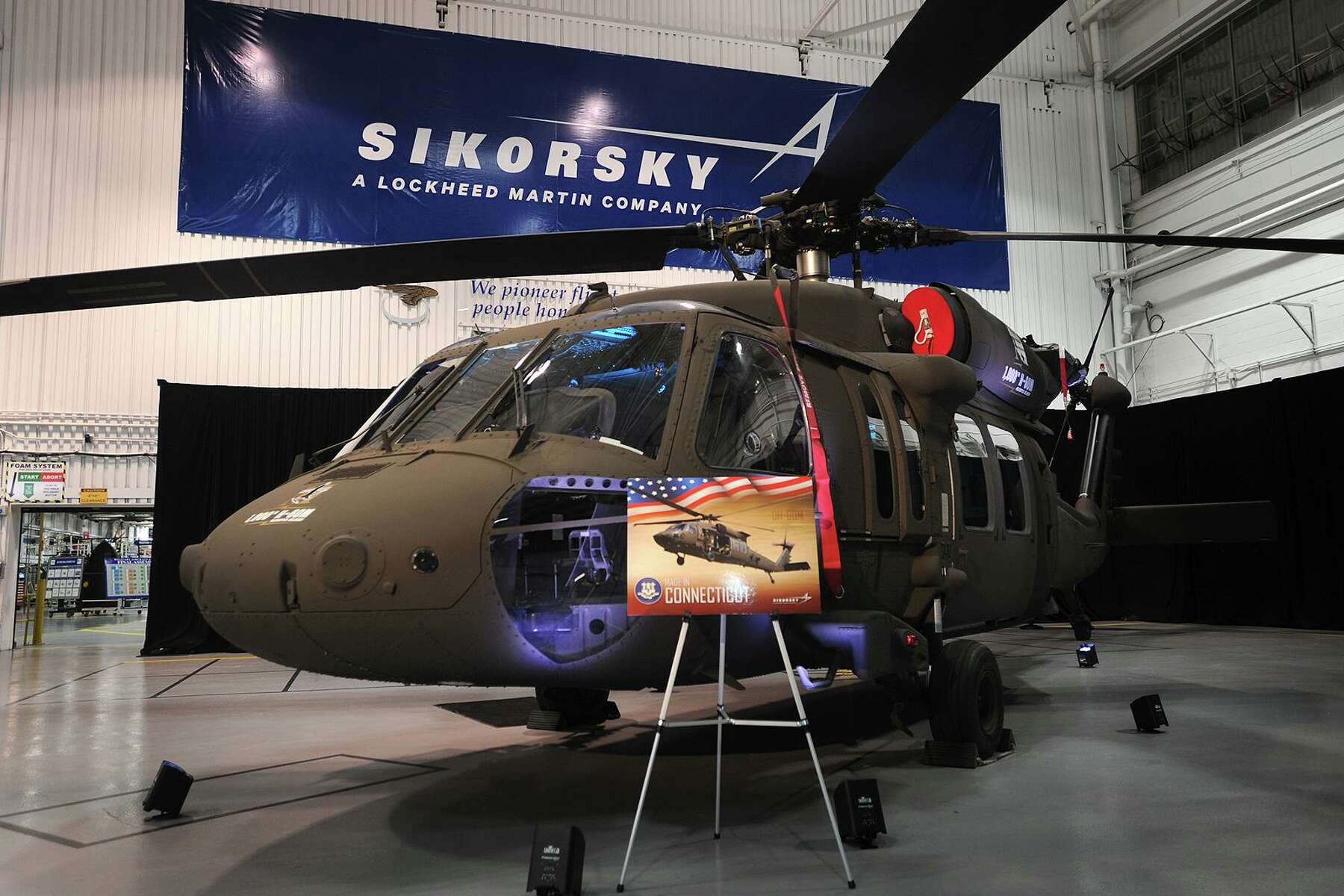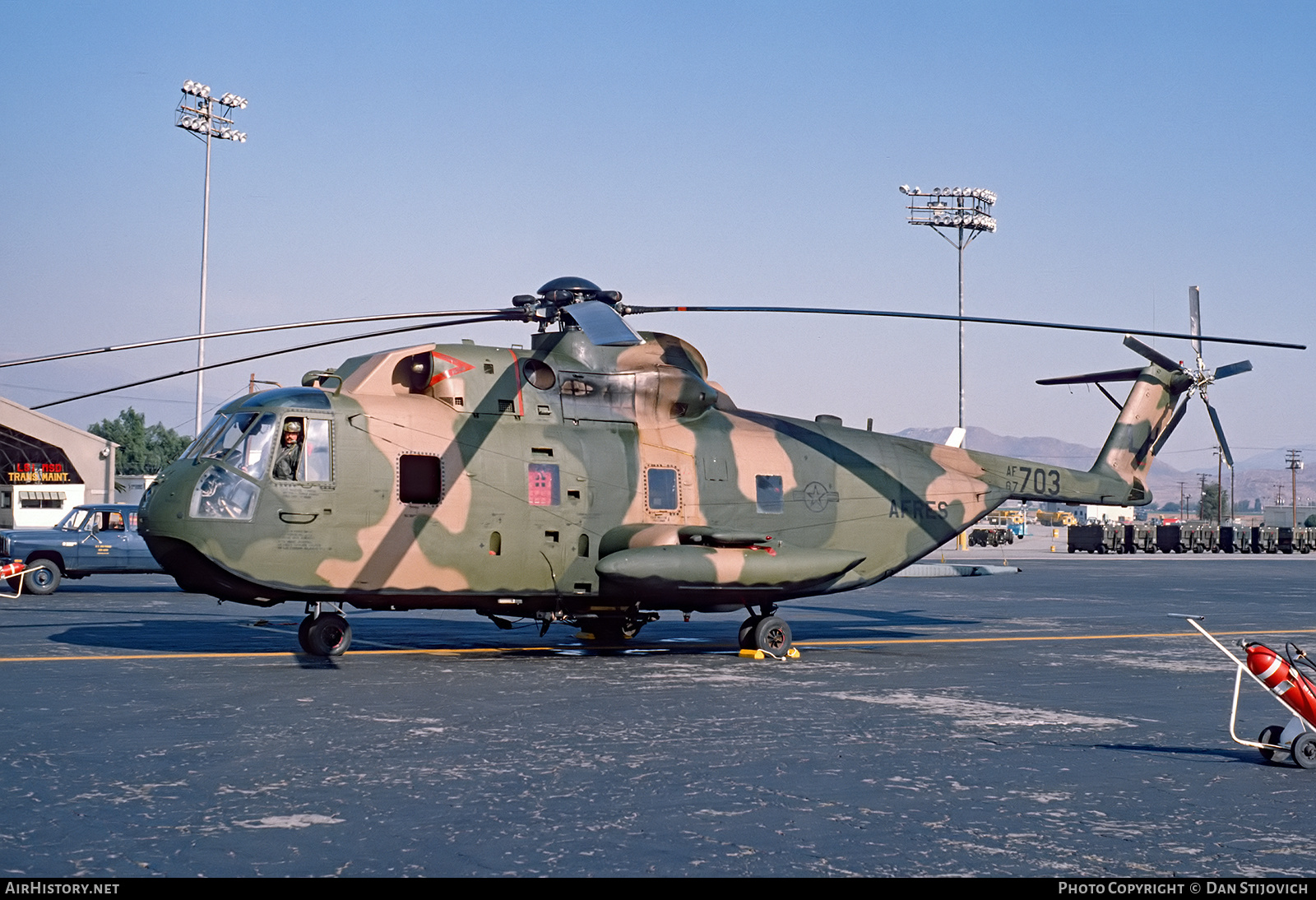S 67 Helicopter - The mid-1960s were a busy time in the helicopter industry, both in the civil and military sectors. Turbine light helicopters began to make a significant impact, replacing piston engine rotorcraft in the commercial market. On the military side, the US wanted turbine-armored helicopters in the Vietnam War that could be used to protect the Piasecki H-21 and Bell UH-1 Huey transport aircraft.
In the summer of 1964, the US Army issued a request for proposals (RFP) for a new Advanced Air Fire Support System (AFSS). More than a dozen companies submitted proposals, and the bids of two companies - Lockheed Corporation and Sikorsky Aircraft - finally won and advanced to the next round.
S 67 Helicopter

The Lockheed Design CL-840 Cheyenne is a composite helicopter with a two-person cockpit, a solid main rotor system, a stub wing, a standard tail rotor, and a separate thrust extension behind the fuselage.
Sikorsky S 67: The Original Blackhawk
The S-67 Blackhawk was designed, built, and built as the first aircraft in the nine-month program that was launched. Sikorsky collection photo/Jeff Evans
Sikorsky's proposal, called the S-66, had a conventional main rotor system, a two-person tandem cockpit, stub wings, and a tail rotor at the rear called a "rotoprop". As the helicopter's speed increases, this special tail rotor can rotate 90 degrees to act as a popper prop. Sikorsky considers the design to be a simpler solution, lighter and cheaper, and more stable and efficient during flight.
However, in November 1965, the US Army felt that the stakes in the S-66 program were too high and announced Lockheed Cheney as the winner of the AAFSS competition. As history shows, the AH-56 had its own development problems, with the Army asking Lockheed to fix some of the technical problems with the helicopter. The development achieved in the middle of the decade was not in the interest of the army, and in May 1969 it canceled the production contract.
The loss of the S-66 proposal was very unfortunate for Sikorsky, who was very confident in the design of the type. Sikorsky executives and engineers followed the development of the Cheyenne helicopter, and in mid-1969 began preliminary studies of a high-speed combat helicopter known as the S-67 Blackhawk.
Original Slide Us Army Sikorsky Skycrane Helicopter S 64 Ch 54a 67 18423
The United Aircraft Corporation financed the development of the new aircraft without the use of military support, but many of the S-67's design features were originally developed for the S-66 program. Design and flight experience from the winged, powered Sikorsky S-61F compound helicopter contributed to the design of the S-67.
The S-67 Blackhawk program was approved in January 1970, and John A. McKenna, Sikorsky's executive vice president, was given primary responsibility for the type's development.
The mission was to design, build and fly an 18,000 to 20,000 lb (8,170 to 9,080 kg) helicopter capable of reaching speeds of up to 200 knots (370 km/h). A shallow sink. The budget was set at 3 million dollars - and the team only had nine months to do it.

Production of the single S-67 prototype began in February 1970 and was completed seven months later on a budget of $100,000. The first flight took place on August 20, 1970 at the company's Stratford, Connecticut plant. Test pilot Kurt Cannon greatly influenced the final design.
Germany Cancels Heavy Lift Helicopter Competition
"The S-67 is a combination of proven components and a new design concept," says a Sikorsky fact sheet. "The result is a new helicopter weapon system with significantly reduced costs and technical risks; high performance, ease of maintenance and early availability.
In September 1974, the S-67 was given its final paint scheme before departing for Great Britain. Sikorsky Collection Photo/Jeff Evans
The aircraft has a high-speed sliding blade tip and flew at speeds up to Mach .96 without adverse effects during one test.
Vertical wings with large camber provide directional stability, which, until now, has not been seen in helicopters. When the speed reaches 46 mph (74 km/h), Finn begins to control the torque-compensating tail rotor. If the tail rotor fails, the Blackhawk can still fly forward and land safely.
Bell Yah 63 By Bagera3005 On Deviantart
Controlled horizontal stabilization reduces rotor stress in maneuvering flight, allowing the pilot to trim the fuselage independently of the rotor.
Wing-mounted speed brakes, a first for a helicopter, increase agility and control during combat maneuvers. The brake can be opened or closed in three seconds and provides a deceleration of up to 100 percent and a diving angle increased by 38 percent. The brakes, combined with the stability provided by the helicopter's wings and stabilizers, allow the Blackhawk to lock on to targets at all speeds. The speed brake also gives the helicopter unmatched maneuverability.
The S-67 is shown in flight with an experimental fan tail. The fins are built by Hamilton Standard. Sikorsky collection photo/Jeff Evans

"The S-67 is mainly used as a high-speed helicopter for air support, including anti-tank use, but it can also perform high-speed rescue, high-speed troop transport, cargo or weapons transport, surveillance and other missions. . reconnaissance, and war anti-submarine,” the Sikorsky fact sheet states.
Sikorsky Ch 54b Tarhe (s 64b)
The helicopter had a wingspan of 27 feet four inches (8.3 m) and originally had two heavy points for weapons, fuel tanks and other armaments. One strong point was added later. Since it is not a major part of the helicopter in military transport and foreign cargo missions, the wings are easily removed.
The fuselage is three feet, 10 inches (1.2 m) wide and 74 feet, one inch (22.6 m) long. Design innovations and a narrow, low-drag silhouette, aimed at new speed, agility and flexibility. The S-67 can carry weapons and ammunition weighing up to 8,000 pounds (3,632 kg) and can carry existing weapons such as turret-mounted 7.62 mm guns, 20 and 30 mm cannons, 40 mm grenade launchers, and mounted rockets in Wing or Tow missile pods. The gun turret is mounted directly under the pilot's seat.
The pilot's co-pilot and gunner sit under the same canopy and the pilot sits behind. They use standard cycles and general controls to fly. The pilot enters the S-67 on the left and the co-pilot enters the helicopter on the right.
The S-67 is powered by two 1,500 horsepower General Electric T58-GE-5 turbine engines - the same ones used in the Sikorsky S-61.
Anigrand Models 1970 Sikorsky S 67 Blackhawk Attack Helicopter Kit Aa 2022
The two front twin main wheels are turned into sponsons on the sides of the fuselage. The non-retractable fixed tail wheel is placed behind the fuselage. The S-67's landing gear works well when landing on level ground, but can be a problem on uneven ground.
Soon, the aircraft demonstrated that it could perform rolls, spins and S-splits with ease. Driving movements are only done on the right side. Test pilot Cannon, along with co-pilot Byron Graham, set a new absolute speed record in December 1970, averaging 216.8 mph (348.9 km/h) over 1.86 miles (three kilometers). The average speed record is 220.9 mph (355.5 km/h) by the Blackhawk over a course of 9.3 to 15.5 miles (15 to 25 km). The record would last for the next eight years.
The S-67 is being deployed in the US military next year as it moves across the US to more than a dozen bases.

Following the self-funded S-67 test program, Sikorsky was awarded an Army contract to further evaluate the airframe's airspeed braking, stabilization, maneuvering, and control capabilities up to 3.3 g airframes. The test also explores "force sensing" - an artificial sense system in the controls to give the control system a more aircraft-like feel in the forces felt by the pilot.
Aircraft Photo Of 67 14703 / Af67 703
The US Army's Aviation Systems Test Activity conducted an evaluation of the Sikorsky S-67 Blackhawk helicopter in mid-1972 in support of the Attack Helicopter Requirement Evaluation (AHRE). Aircraft performance, handling characteristics and mission suitability were tested over a flight time of over 26 hours. Finally, 16 handling defects were identified. All are considered repairable, and do not affect the performance of the aircraft. All told, the Army likes the performance characteristics of the S-67, and several Army pilots are certified against the Blackhawk during evaluations.
Army completes S-67 altitude test in Colorado to provide hot day/maximum altitude data. This test program defines the flight envelope and demonstrates the suitability of the S-67 for operations anywhere in the world.
"S-67 is very manoeuvrable, I have experienced up to 3 gigs and can easily bank and turn," said a senior military pilot. "Visibility is excellent from both cockpits."
The US Army considered the S-67 and the Bell Model 309 Kingcobra as replacements for the AH-56 Cheyenne program, but in the end neither competitor was selected. Eight days after canceling the Cheyenne program, the Army announced a new Advanced Attack Helicopter (AAH) program.
Sikorsky Helicopter Programs' Earnings Still In Decline In Q3
Nash s 67, 67's, 67 mustang s code, th-67 helicopter, smarty s 67, s 67, th 67 creek training helicopter, ottawa 67 s, helicopter s, th 67 helicopter pictures, 67 barracuda formula s, dearmond s 67

0 Comments